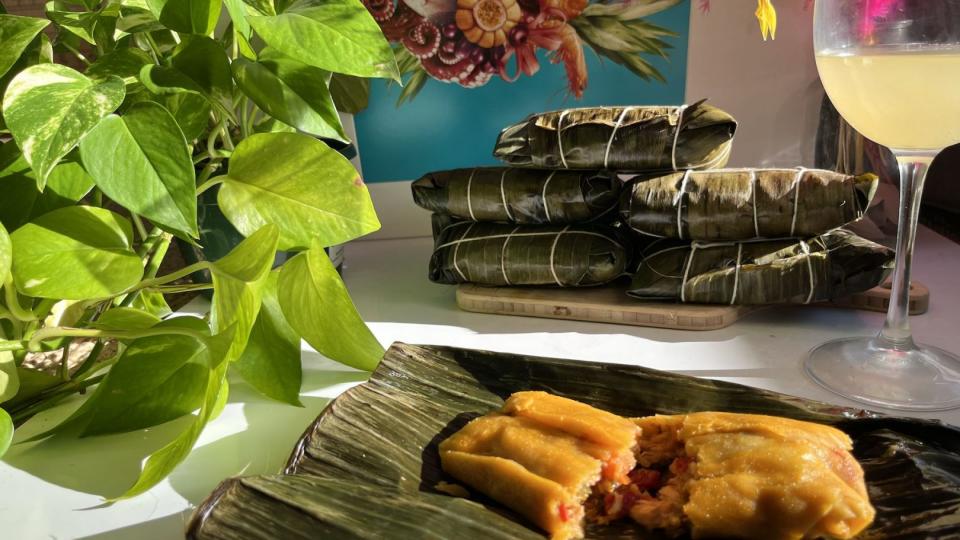We may earn commission from links on this page, but we only recommend products we believe in. Pricing and availability are subject to change.
An ode to hallacas and my favorite Venezuelan Christmas traditions

Adriana Urbina is an In The Know cooking contributor. Follow her on Instagram and visit her website for more.
Like in most cultures, Christmas celebrations in Latin America include large get-togethers with lots of food, dance, music and family. But I want to share a little bit more about Venezuela’s Christmas traditions.
Every family celebrates differently but, on Dec. 16, people put out their pesebres (mangers), which are specially designed and thought-out depictions of the Nativity scene. Some Venezuelans attend daily early morning church services between Dec. 16 through Dec. 24 called Misa de Aguinaldo (early morning mass). In Caracas, the capital of Venezuela, many neighborhoods tend to close their streets to cars so that children can play freely.
Families also attend Christmas Eve mass. After, they return home to a huge, delicious dinner composed of hallacas, which is my favorite recipe of the year. I wait all year long to make this!
Hallacas are a Venezuelan tradition dating back to the time of colonization. With an Indigenous name and a number of ingredients crossbred from our Venezuelan Aborigines and European settlers, hallacas are the perfect symbol of our mixed culture. Hallacas are so much more than that to any Venezuelan, though. They represent a tradition that brings family and friends together during this special time of year. That’s right — we only make them during Christmastime. We wait all year long for that first bite that brings us back to cherished childhood memories. The flavors remind us of loved ones that may be gone but continue to live on through this tradition.
Hallacas start with a thin layer of corn dough followed by a stew-like base featuring a mixture of chicken, beef and pork — or any combination per the family’s preference. The mixture is slow-cooked with onions, peppers, garlic, spices, raisins, olives and capers. Then, they are wrapped in plantain leaves, tied and boiled. Because it’s a very laborious recipe, families tend to make it together. In my family, each person has a task assigned to them. My dad always cuts and cleans the leaves, my sister helps to cut and assemble ingredients, and my mom helps my grandma make the stew.

It’s so gratifying knowing that we’re eating something that we all did together — as a team and a family.
Above, I mentioned what is commonly thought of as the staple ingredients, but every region of Venezuela makes them differently, and every family has its secret recipe. In most cases, this recipe probably only lives in the head of the master of the family — meaning the grandma.
There is also a saying that the best hallacas are the ones made by your mom. In my case, I combine the best recipes I know from my family. These were passed down from my grandmother and have evolved since I became a chef. You can find my current recipe here.
Last but not least, we eat the hallacas with a thin slice of pan de jamón, which is a roll of bread filled with ham, raisins and olives. It’s fluffy and delicious! Also on the table is a chicken salad made with cooked potatoes, carrots, peas and string beans.
For a Christmas Eve celebration, firecrackers explode and bells ring to call worshippers from bed in the predawn hours. And of course, there’s a lot of dancing, gifts and rum.
If you enjoyed this article, check out these three pumpkin recipes from Adriana Urbina that go far beyond pumpkin pie!
The post An ode to hallacas and my favorite Venezuelan Christmas traditions appeared first on In The Know.
More from In The Know:
The 7 best gifts for the man who has everything
6 actually cool last-minute gifts you can send over email

 Yahoo Finance
Yahoo Finance 